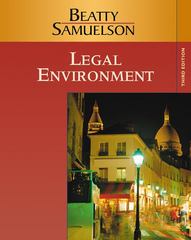

1. Two researchers, Boyd and Hoyt, are studying Blackberry adoption among adults over age 35 in Southwestern Ontario. Blackberry states that during the past six months, the monthly growth rate in the number of Blackberry users in this age group has averaged 2%. Boyd assumes this means a discrete growth of 2% per month. Hoyt believes that Blackberry means continuous growth at a rate of 2%. Based on their respective beliefs, Boyd and Hoyt each project the number of Blackberry users six months from now. If there are 16,000 users over age 35 in Southwestern Ontario today, A. Boyd's projected number of users exceeds Hoyt's by fewer than 20 B. Boyd's projected number of users exceeds Hoyt's by more than 20 C. Hoyt's projected number of users exceeds Boyd's by fewer than 20 D. Hoyt's projected number of users exceeds Boyd's by more than 20The following information is to be used for Questions 2 and 3 The demand and supply for an unnamed product can be described by: QD = 200 - 2xPD (demand function); Qs =4xPs - 16 (supply function). 2. At the Pareto-Efficient quantity, what is the total benefit provided to buyers of all units produced and traded? A. No more than $2,000 B. More than $2,000 but no more than $4,000 C. More than $4,000 but no more than $6,000 D. More than $6,000 but no more than $8,000 E. More than $8,000 3. At the Pareto-Efficient quantity, what is the total surplus (total mer benefit) of all units produced and traded? A. No more than $2,000 B. More than $2,000 but no more than $4,000 C. More than $4,000 but no more than $6,000 D. More than $6,000 but no more than $8,000 E. More than $8,000The inverse demand for newsprint can be described by P=200-Q. The private marginal cost of producing newsprint is MC , =140+Q. The total external cost (from water-borne pollution)is a simple linear function of the quantity of newsprint (and its co-products) produced, so the marginal external cost is MC = Q 4. Comparing the private market equilibrium quantity of newsprint produced, Op, with the socially optimal quantity, @ , we find: A. OSO-Q; '1.A2 where H and A are the number of units of honey and apples produced respectively. The price of honey is $1 and the price of apples is $3 per unit. Let AP he the output of apples if the rms operate independently (privately), and let As he the output of apples if the rms are operated by a single owner so as to maximize total prot. A. 605(A3AP) B. {AsAP)












